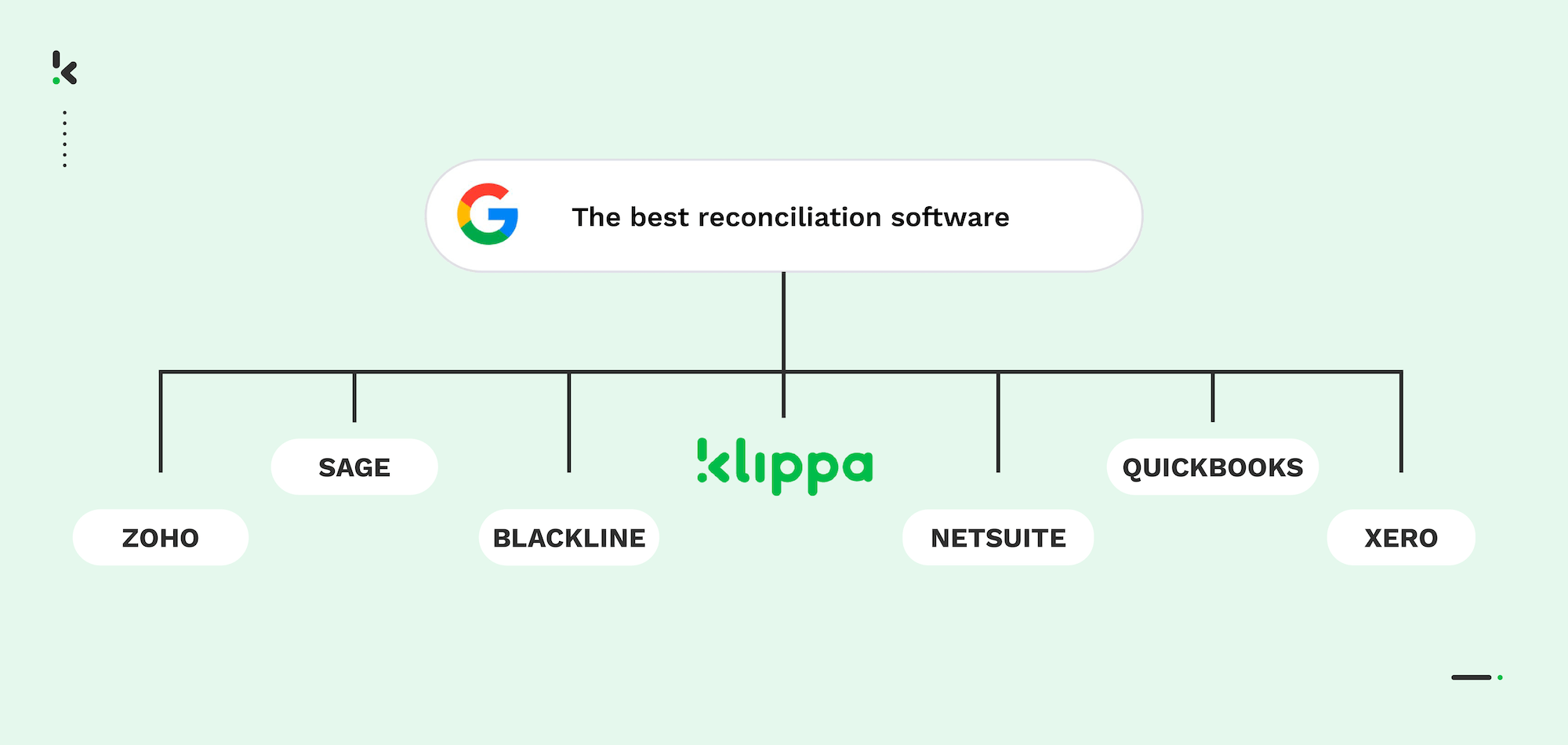

Manual account reconciliation often proves to be a cumbersome and error-prone process. Recent data from Rossum (2025) reveals that 49% of finance departments still operate with zero automation, relying entirely on manual data entry and spreadsheets to close their books.
In this blog, we will explore the top 7 reconciliation software options for 2026. Each tool comes with its own set of unique features designed to streamline financial data management for businesses. We’ll dive into the advantages and limitations of each software, assisting you in selecting the perfect fit for your business needs.
Key Takeaways
The 7 Best Reconciliation Software for 2026 are:
- Klippa SpendControl – Best all-in-one solution for SMEs that need invoice, expense, and credit card reconciliation in one intuitive platform.
- Zoho – Good fit for small businesses looking for a flexible and affordable cloud accounting tool with automated reconciliation.
- Xero – Ideal for companies needing basic reconciliation and accounting features with unlimited users per plan.
- BlackLine – Designed for large enterprises that need robust controls, automation, and visibility in financial close processes.
- Oracle NetSuite – A comprehensive ERP solution with strong financial management and real-time reconciliation capabilities.
- Sage Intacct – Tailored for midsize and large companies seeking customizable workflows and advanced financial insights.
- QuickBooks – A Reliable choice for small businesses looking to streamline bookkeeping, invoicing, and bank reconciliation.
Comparison of the best reconciliation software platforms in 2026:
What is Reconciliation Software?
Account reconciliation software is a tool designed to simplify the process of reconciling financial accounts. This software ensures that the transactions recorded in the books match those reported in bank statements, credit card statements, and other financial documents.
This type of software automates the comparison of account entries with corresponding documentation, identifying discrepancies, and facilitating accurate financial reporting.
Why is Account Reconciliation Important?
Account reconciliation is crucial for maintaining accurate financial records, ensuring that the transactions match the actual financial activity. It helps in detecting and correcting errors, preventing fraud, and ensuring compliance with regulatory standards.
Regular reconciliation provides a clear and accurate picture of a company’s financial health, which is especially crucial during periods like month-end and year-end closing. It enables better decision-making and financial planning. By identifying discrepancies early, businesses can address issues quickly, maintaining the integrity and reliability of their financial data.
Types of Reconciliation Software
- Bank Reconciliation Software: This type of software focuses on comparing a company’s financial records with its bank statements to ensure that all transactions are accurately recorded. It helps identify discrepancies such as missing transactions, bank fees, or unauthorized charges.
- Account Reconciliation Software: This software is designed to verify the accuracy of financial accounts by comparing internal records with external documents. It encompasses various accounts, including receivables and payables, ensuring that all entries are consistent and correct.
- Balance Sheet Reconciliation Software: This software ensures that all balance sheet accounts, such as assets, liabilities, and equity, are accurately reconciled. It verifies that the balances are correct and supported by appropriate documentation, providing a clear view of the company’s financial position.
The 7 Best Reconciliation Software in 2026
Choosing the right reconciliation tool from the many available solutions on the market can be overwhelming.
To help you, we’ve selected some of the most popular tools, looked into their features, and explored real user feedback from trusted review platforms. The result is a clear overview of what each app does well and where it might fall short based on what actual users are saying.
1. Klippa SpendControl – Best all-in-one AI-powered solution for reconciliation
Klippa SpendControl is a cloud-based pre-accounting software that offers expense management, invoice processing, and corporate credit card modules in a single solution.
SpendControl automates credit card reconciliation by matching uploaded receipts to card or bank statements. Our solution also assists the account reconciliation process by ensuring accurate booking of all financial data.
SpendControl automatically scans and extracts data fields from all transactional documents, allowing you to approve and book data in your financial administration.
Pros
- Manage your vendor invoices, employee expenses, and corporate credit cards in one platform
- Automatically match bank statements with your credit card expenses
- Submit, process, and approve business expenses via web or mobile app
- Prevent financial fraud and discrepancies with built-in duplicate and fraud detection
- Bundle and approve multiple expenses in a single report based on a project, cost center, or unit
- Achieve 99% data extraction accuracy with Klippa’s OCR
- Regain control over your finances with intuitive dashboards
- Customize your approval management with multi-level authorization flows
- Never fail to comply with tax and data privacy regulations with our ISO27001-certified and GDPR-compliant solution
- Rely on automatic multi-currency conversion for international payments
- Integrate SpendControl with your accounting and ERP software, like Xero, NetSuite, or SAP
Cons
- Automates only credit card reconciliation
- Currently, no 3-way matching (coming soon)
Pricing
- Effective plan: Spend management platform with automated submissions, approvals, and reporting features as well as a credit card module, $5 per user/month
- Premium plan: Spend management module with additional comprehensive customization and financial regulation compliance features, $6 per user/month
- Custom plan: A customizable solution tailored to your company’s needs. Contact us to learn more about pricing
Ideal business type and size: Klippa SpendControl is best suited for small to medium-sized companies seeking a scalable AP automation solution that processes vendor invoices, employee expenses, and credit card transactions in one platform.
2. Zoho – Good fit for businesses looking for an affordable accounting tool
Zoho is a cloud-based accounting solution that includes automated bank account reconciliation features. It offers a range of features tailored to simplify and automate financial management and accounting processes.
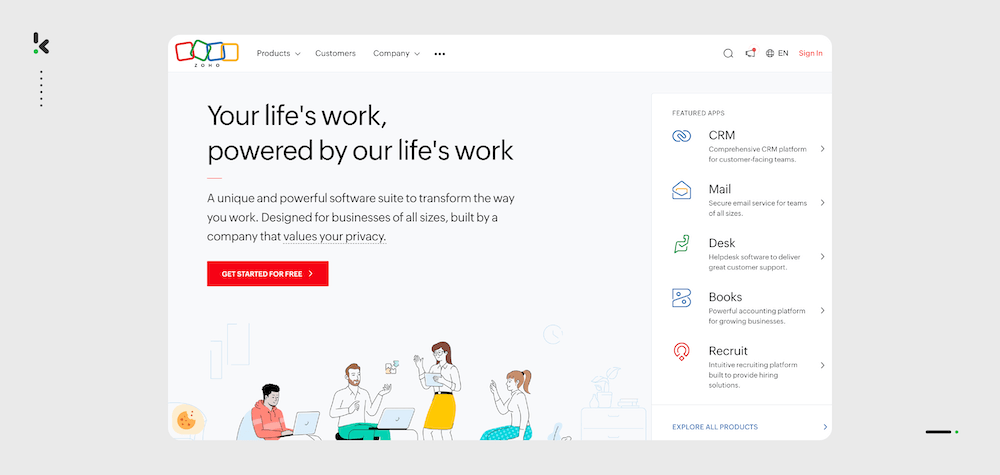

Pros
- Automated matching of account transactions with bank statements
- Bulk upload of transactional documents
- Direct integrations with credit card networks like Visa, Mastercard, and American Express
- Detailed financial reports and analytics, available in higher-tier plans
- Compliance with international standards like GDPR and ISO certifications
Cons
- Features such as multi-currency support, custom reports, and validation rules are only available in premium plans
- Based on user reviews, the software is lacking advanced inventory management features
- Based on user reviews, the software provides only basic invoice templates and is very limited in customization options (Capterra)
Pricing
- Standard plan: Best suited for businesses with one-time billing requirements, $29/month
- Premuim plan: Best suited for businesses with one-time and subscription billing requirements, $69/month
- Custom plan: Best suited for enterprises with advanced billing requirements, custom pricing
For the most accurate and up-to-date details, please check Zoho’s official pricing page.
Ideal business type and size: Zoho is best suited for small to medium-sized businesses that don’t need advanced features.
3. Xero – Ideal for companies needing basic reconciliation
Xero is an accounting software that lets companies digitally approve and pay vendor invoices. The software helps companies with simple bookkeeping and complex financial management.
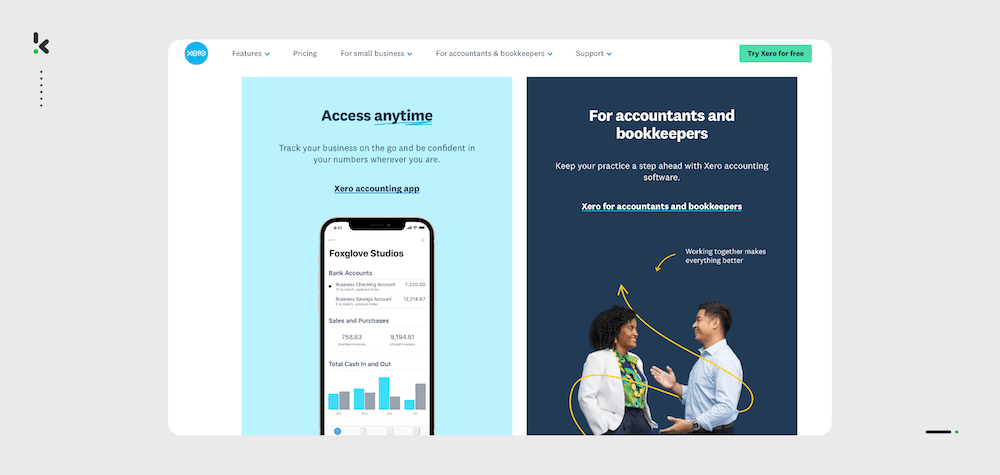

Pros
- Automatic recognition and removal of duplicate bank statement lines
- Bulk upload of invoices
- Customizable financial reporting tools
- Security measures, including data encryption and multi-factor authentication
- Unlimited users across all plans, each with customizable permission levels
Cons
- Although affordable, Xero’s basic plan limits users to only 20 invoices and five bills per month
- Customer support is limited to online interactions, as Xero does not offer phone support
- Based on user reviews, the platform could be more intuitive and user-friendly (Capterra)
Pricing
- Starter plan: Upload of 5 invoices and reconciliation of bank transactions, $29/month
- Standard plan: Reconciliation of bank transactions in bulk, $46/month
- Premium plan: Additional multi-currency support, $62/month
For the most accurate and up-to-date details, please check Xero’s official pricing page.
Ideal business type and size: Xero is best suited for small to medium-sized businesses with small receiving invoice volumes.
4. BlackLine – Designed for large enterprises that need control and visibility
BlackLine is a cloud-based solution designed for automating and controlling the financial close process. It’s used by finance and accounting teams to enhance accuracy, visibility, and efficiency in their processes.
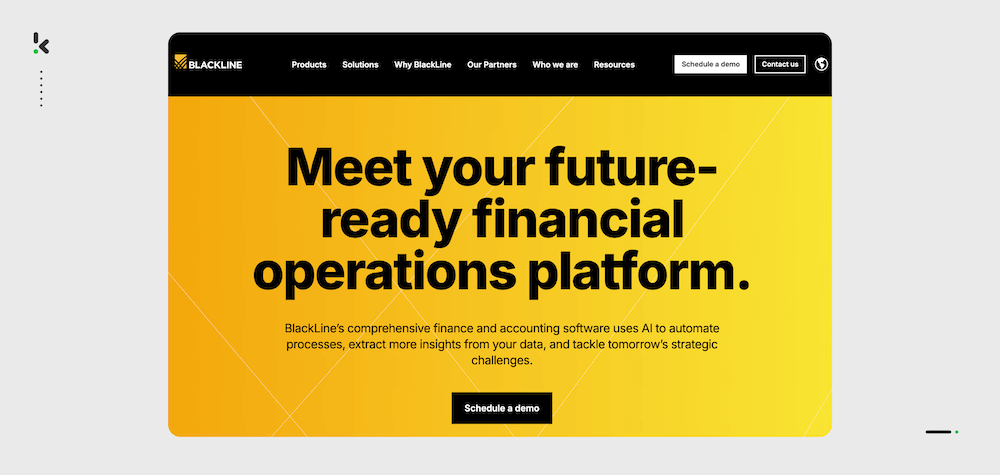

Pros
- Automated transaction matching
- Auto-import of GL and sub-ledger balances
- Embedded segregation of user duties
- Real-time insights into reconciliation status with cloud-based dashboards
- Configurable rule-based workflows
Cons
- Based on customer reviews, the initial setup and implementation of the solution can be complex and time-consuming
- Some users experience crashes and lag when handling large volumes of data
- Based on user reviews, the platform could be more intuitive and user-friendly (G2)
Pricing
- Information on pricing models is not available on the official website
Ideal business type and size: BlackLine is best suited for medium to large-sized companies that engage in complex financial processes, such as multinational corporations, financial institutions, etc.
5. Oracle NetSuite – A comprehensive ERP solution with strong financial management
Oracle NetSuite is a cloud-based ERP system that includes a suite of tools designed to streamline business operations, including financial management. Reconciliation is a crucial part of NetSuite’s financial management capabilities.
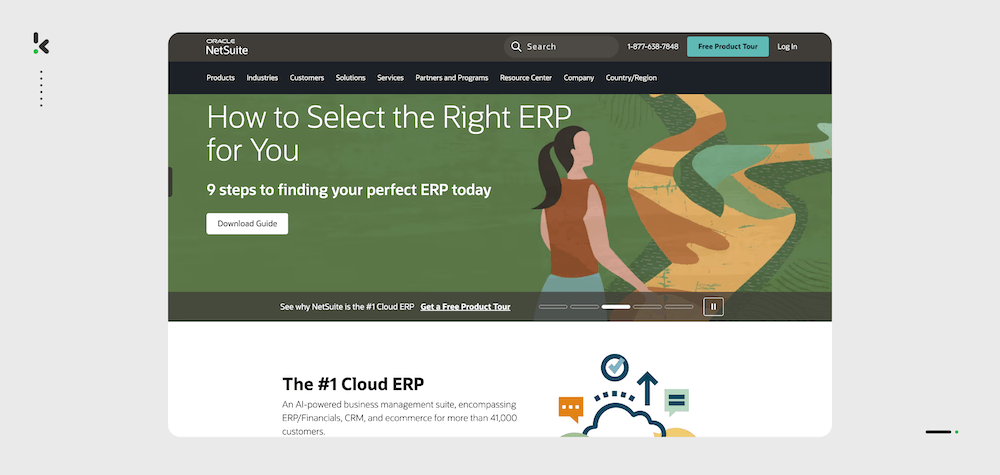

Pros
- Automated bank reconciliation that matches ledger accounts with bank statements
- Automated matching of transactions to bank and credit card statements
- Real-time visibility into financial transactions and account statuses
- Custom rules and workflows for reconciliation processes
- Integration with other modules within the software, such as accounts receivable and inventory management
Cons
- No free trial or money-back guarantee, making initial testing more challenging
- This software may be too complex and costly for small businesses or those only needing basic accounting functionalities
Pricing
- Information on pricing models is not available on the official website. Users report that, depending on the business size, Oracle NetSuite can cost around $99 per user per month, plus a $999 monthly licensing fee. Various sources also provide price ranges of approximately $30,000 to over $1 million annually
Ideal business type and size: Oracle NetSuite is best suited for midsize to large businesses that require advanced features.
6. Sage Intacct – Tailored for companies seeking advanced financial insights
Sage Intacct is a cloud-based financial management and accounting software. The reconciliation features within Sage Intacct are designed to streamline complex financial processes, ensuring accuracy and compliance.
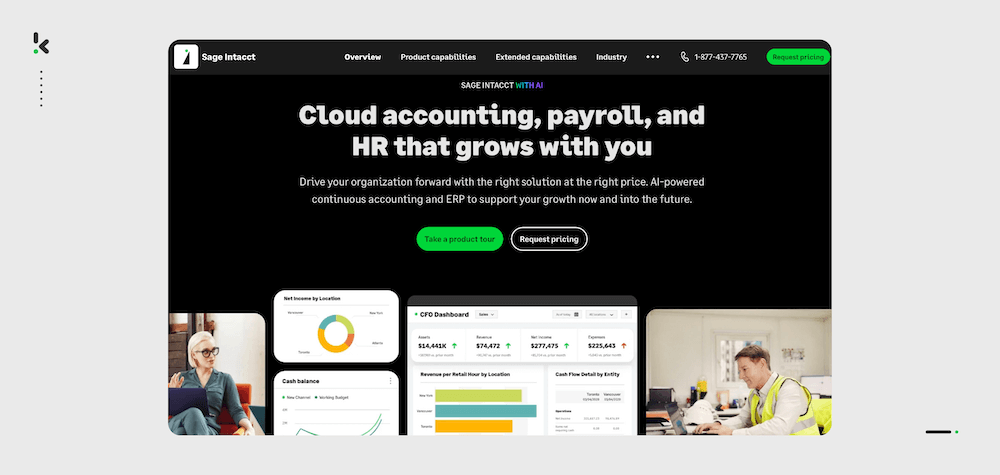

Pros
- Automated comparison of bank statements with the general ledger
- Automatic matching of transactions against the corresponding entries in the ledger
- Real-time financial reporting and reconciliation status
- Customizable approval workflows
- Integrated collaboration tools for communication between team members
Cons
- This software may be too costly for small businesses
- Based on user reviews, while the software is highly customizable, customizing reports and dashboard features can be time-consuming and cumbersome
- Inventory and order management limitations (Gartner)
Pricing
- Information on pricing models is not available on the official website. Approximate prices often fall in the range of $10,000 to $30,000 annually
Ideal business type and size: Sage Intacct is best suited for medium to large-sized businesses with complex AP processes and extensive customization requirements.
7. QuickBooks – A reliable choice to streamline bookkeeping
QuickBooks is an accounting software that offers a range of features, including invoicing, payroll processing, bill management, and tax preparation, enabling users to streamline their financial tasks effectively. With both desktop and cloud-based versions, QuickBooks caters to a variety of business needs.
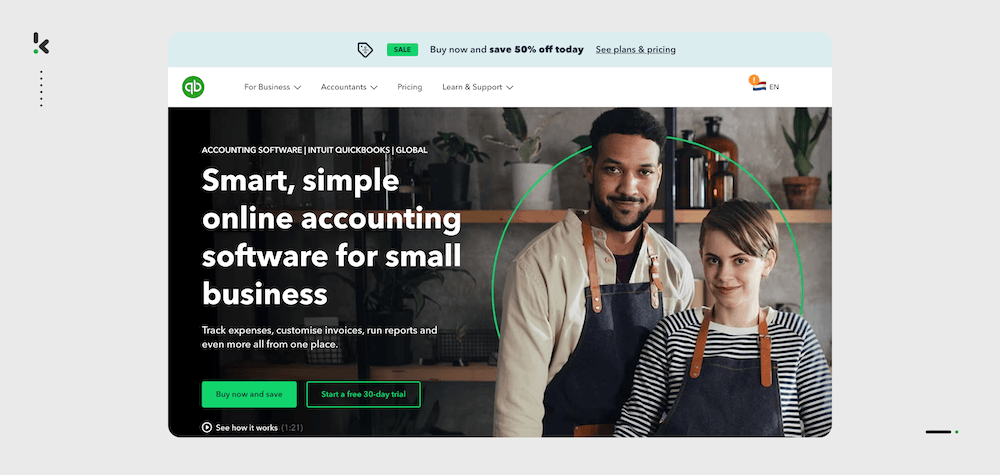

Pros
- Reconciliation of bank and credit card accounts by matching transactions with those listed on the bank or credit card statement
- Automatic transaction import from banks and credit cards
- Detection of discrepancies between the records and the bank statements, such as missing transactions or differences in amounts
- Real-time updates in financial data
- Multi-currency reconciliation support
Cons
- Based on user reviews, QuickBooks offers basic functionality that suits small businesses but struggles with more complex business needs
- Limited customization options, especially in terms of invoice design and report customization
- Users report frequent system crashes due to file size constraints and performance issues when handling large volumes of transactions or multiple users (GetApp)
- Based on reviews, the software may not be suitable for businesses that need to comply with specific financial regulations or handle complex global transactions involving multiple currencies and tax jurisdictions (Capterra)
Pricing
- Simple start plan: Designed for solo entrepreneurs, this plan offers basic features like income and expense tracking, invoicing, and tax filing, limited to one user, $35/month
- Essentials plan: Adds bill management and time tracking for up to three users, providing more robust features for small businesses, $65/month
- Plus plan: Includes everything in Essentials, plus project tracking, inventory management, and support for up to five users, ideal for growing businesses, $99/month
- Advanced plan: The most comprehensive plan with advanced reporting, dedicated account support, and customization options, designed for larger businesses with up to 25 users, $235/month
For the most accurate and up-to-date details, please check QuickBooks’ official pricing page.
Ideal business type and size: QuickBooks is best suited for small to medium-sized businesses that don’t need advanced features and customization.
How to Select the Best Reconciliation Software
Determining the most suitable reconciliation software for your business depends on your specific requirements and priority criteria. Nonetheless, certain functionalities are crucial elements of any software that aims to simplify the reconciliation process. Here are some of the essential features to look out for:
Automated Data Entry
Reconciliation software that utilizes OCR (Optical Character Recognition) technology can automatically extract data from receipts and invoices, reducing the need for manual data entry and minimizing errors. Automated data entry ensures that all transactions are recorded accurately in the company’s financial system, facilitating easier and faster reconciliation with bank statements.
Duplicate Detection
An effective reconciliation solution utilizes advanced algorithms, such as fuzzy matching and machine learning, to identify duplicates that may not be exact matches but are substantially similar. This technology assesses various attributes of transactions, such as amounts, dates, and reference numbers, to detect and alert users to potential duplicates, ensuring that financial reports remain accurate.
Integration with Accounting Systems
The best reconciliation software should offer APIs (Application Programming Interfaces) that facilitate robust integration with a wide range of financial systems, from ERP platforms like SAP and Oracle to more common accounting software like QuickBooks. This integration allows for the automated transfer of data, ensuring consistency and eliminating the need for manual data entry, which is prone to errors.
Custom Reconciliation Rules
Look for software that allows for the creation of customizable business rules using conditional logic and scripting capabilities.
This feature should let users define specific criteria for matches, non-matches, and exceptions based on their unique business processes. The ability to tailor these rules enables companies to handle complex and unusual financial transactions smoothly and follow internal controls.
Real-Time Reconciliation
Real-time processing is supported by in-memory computing, which allows the software to access and analyze large volumes of data instantly. This technology is crucial for businesses that handle a high volume of transactions and need to maintain up-to-the-minute accuracy in their financial records.
User-Friendly Interface
The software should feature a clean, intuitive dashboard that provides a comprehensive overview of the reconciliation status, alerts for mismatches, and easy navigation to detailed reports. An effective interface reduces training time and enhances productivity by allowing users to quickly find and address reconciliation issues.
Robust Reporting Tools
Advanced reporting features should include the ability to generate detailed reconciliation reports and historical analysis. These reports can highlight unaccounted transactions, detect anomalies, and provide comprehensive audit trails, which are essential for accurate reconciliation.
Security Features
Essential security features include end-to-end encryption of data, both in transit and at rest, to protect sensitive financial information. Role-based access control (RBAC), multi-factor authentication (MFA), and compliance with local and international standards such as GDPR and SOX are crucial for maintaining the integrity and confidentiality of data.
Scalability
The software should be built on a scalable architecture, such as cloud-based platforms, which can easily adjust resources to handle increased loads. This flexibility ensures that as transaction volumes grow, the software can continue to perform at optimal levels without requiring significant additional investment.
By focusing on these specific features and the technologies behind them, you can select an account reconciliation software that not only fits your current needs but is also capable of adapting to future challenges and opportunities in financial management.
Benefits of Using Reconciliation Software
Automation offers a practical solution to accuracy and efficiency in financial reporting. Here are some of the key advantages businesses can gain from adopting accounts reconciliation software:
Enhanced Accuracy: 4 in every 10 businesses have suffered a monetary loss due to accounting mistakes. Reconciliation software ensures that financial data is accurately matched across different systems and ledgers, increasing the reliability of financial statements by 88%.
Time Efficiency: Automation can save more than 25,000 hours of time spent on the reconciliation process each year. Reconciliation software allows for continuous, rapid comparison of accounts, freeing up finance teams to focus on more strategic tasks.
Improved Compliance: Reconciliation software provides an auditable trail of payment reconciliations and can be updated to comply with new regulations, eliminating the need for manual oversight.
Access to Real-Time Data: Account reconciliation software provides access to real-time data, facilitating immediate insights into business finances. This real-time capability enables quicker decision-making and more effective financial management.
Scalability: Automated reconciliation software scales to meet increasing demands without compromising performance, allowing companies to handle larger volumes of transactions smoothly.
Reduced Financial Risks: By ensuring that all financial transactions are correctly accounted for and reconciled, automated reconciliation software reduces the risk of discrepancies and financial fraud, potentially saving businesses over $878,000 each year.
Strategic Financial Insights: With advanced analytics, an account reconciliation solution can offer valuable insights into financial trends and potential issues, empowering businesses to make informed strategic decisions.
What Makes Klippa a Top Choice for Reconciliation Automation?
Klippa SpendControl isn’t just another tool – it’s a fully AI-powered receipt scanning and processing platform. Klippa combines AI-powered pre-processing, smart automation, and fraud detection to deliver the fastest, most accurate, and secure reconciliation workflows in 2026.
What makes Klippa stand out from the rest?
Klippa SpendControl leads the way in reconciliation automation with its all-in-one platform that integrates invoice processing, expense management, and corporate credit card modules. It uses AI-powered OCR to ensure fast, accurate, and automated data extraction. For businesses needing a comprehensive solution, it offers the perfect combination of invoice approval workflows, fraud prevention, and seamless integration with popular accounting software like QuickBooks and NetSuite.
Now part of the SER Group, a recognized Leader in the Gartner® Magic Quadrant™ for Document Management, Klippa brings enterprise-grade workflow automation capabilities to teams across industries. Whether you’re in finance, logistics, or healthcare, SpendControl is the most powerful and flexible software available in 2026.
Automate Your Reconciliation with Klippa SpendControl
Although we provided our pick of the best reconciliation software, we believe that if you want to achieve the ultimate efficiency in your financial reporting, Klippa SpendControl has it all to assist your business with managing and further reconciling your financial data.
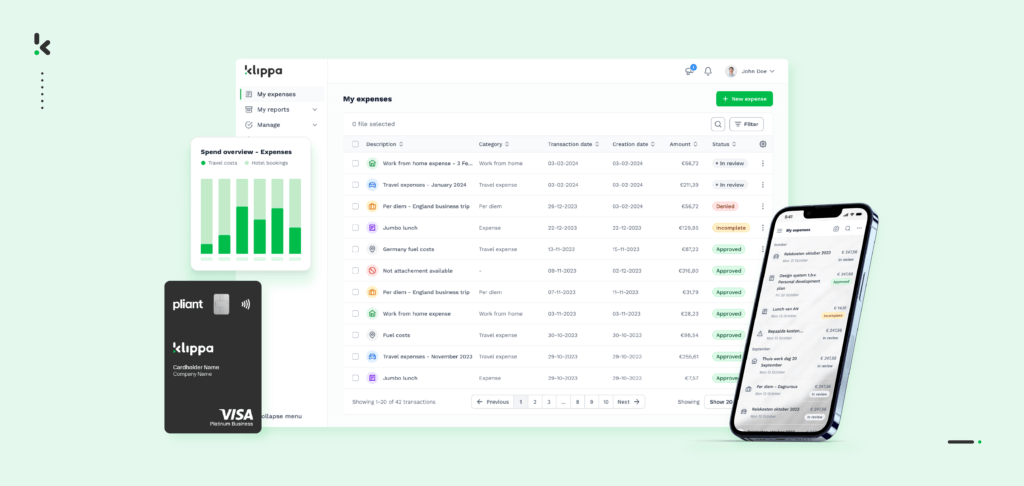

Are you ready to leave behind the hassle of manual financial management? Book a free demo to see our product in action, or contact our SpendControl specialists for more information. Start investing your time in things that really matter!
FAQ
Reconciliation software automates the process of comparing financial transactions, ensuring accuracy and consistency between different financial records. It simplifies the process of matching transactions from different sources to make sure they align with your accounting data.
Reconciliation software saves time, reduces errors, and improves efficiency by automating manual tasks. It ensures faster and more accurate financial reporting, helping businesses maintain up-to-date and reliable financial records.
The answer depends on your business needs, team size, and reconciliation workflows. Here’s a quick guide:
– For an all-in-one spend management and reconciliation platform, Klippa SpendControl is ideal for SMEs seeking to automate credit card, invoice, and expense reconciliation with AI-powered OCR, fraud detection, and customizable approval flows.
– For affordable accounting with built-in bank reconciliation, Xero works well for small businesses that need simple financial tools with strong reporting features.
– For robust enterprise-grade financial close management, BlackLine offers rule-based reconciliation workflows, role separation, and real-time dashboards—best suited for large organizations.
– For growing companies with ERP needs, Oracle NetSuite combines powerful reconciliation automation with deep integration into broader business systems.
– For simple and scalable tools, QuickBooks remains a top pick for startups and SMBs looking to reconcile transactions quickly while handling taxes and invoicing in one place.
That said, Klippa SpendControl stands out as the most versatile and user-friendly reconciliation software in 2026, especially for companies that want to centralize invoice, expense, and card reconciliation in a single, compliant platform.
Yes, most reconciliation software, including Klippa, integrates seamlessly with popular accounting systems like QuickBooks, Xero, and Exact Online, making it easy to incorporate into your existing workflow.
Automated reconciliation reduces the risk of human errors, speeds up the process, and improves accuracy. It allows for real-time updates and ensures that discrepancies are identified and resolved quickly, making the financial close process more efficient.